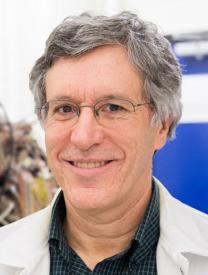Joel Karp, PhD, is a professor in the Department of Radiology at the University of Pennsylvania with a secondary appointment in the Department of Physics and Astronomy. He received his PhD in 1980 at MIT in nuclear physics and accepted a faculty position at Penn in 1983 after his post-doctoral training at Stony Brook University in New York. Dr. Karp oversees the PET Imaging/Cyclotron Facility in radiology that supports both clinical and research studies, and also directs operations of the Nuclear Medicine (PET/SPECT/CT) Core in the Medical School Small Animal Imaging Facility. Dr. Karp serves as the section chief of the physics and instrumentation research group in radiology, which has emphasized development of PET instruments and imaging techniques, and more recently also includes instrumentation for both PET and SPECT preclinical imaging. Dr. Karp's research has focused on investigations to improve the performance of PET technology, including front-end electronics, detector design, data correction techniques, and 3D image reconstruction algorithms. Dr. Karp and his team at Penn have most recently developed technology for time-of-flight imaging which has led to development of the Philips Gemini TF scanner, as well as a proto-type TOF instrument based on a new scintillator, lanthanum bromide. In 2007, Dr. Karp received the Ed Hoffman Memorial Award for outstanding contributions in the field of computers and instrumentation in Nuclear Medicine. Since Dr. Karp transitioned to nuclear medicine he has been active in both the IEEE and the SNM organizations. In the IEEE, he has served as the chair of the Nuclear Medical Imaging Sciences Council, and was the Medical Imaging Conference Chair in 1996 and the General Chair of the Nuclear Science Symposium and Medical Imaging Conference in 2002. He is currently senior editor of the journal IEEE Transactions of Nuclear Science: Nuclear Medical Imaging Sciences. As part of SNM Dr. Karp has served on the Executive Committee of the Computer and Instrumentation Council, and chaired the SNM PET Standards Committee from 1988-91. This led to appointments on both the NEMA PET Standards committee and the IEC PET Characteristics working group, which resulted in the widely accepted NEMA NU-2 standard for specifying PET instrument performance. More recently Dr. Karp has been involved in developing standards of quantitative accuracy for multi-center trials, as part of ACRIN's PET Core Lab and Experimental Imaging Sciences Committee, and the SNM PET Validation Task Force. From 2006-7 he served on the National Academy of Science Committee on the State of the Science in Nuclear Medicine.
PhD, MIT (1980)
Nuclear Medicine PET and SPECT
UPenn School of Medicine

